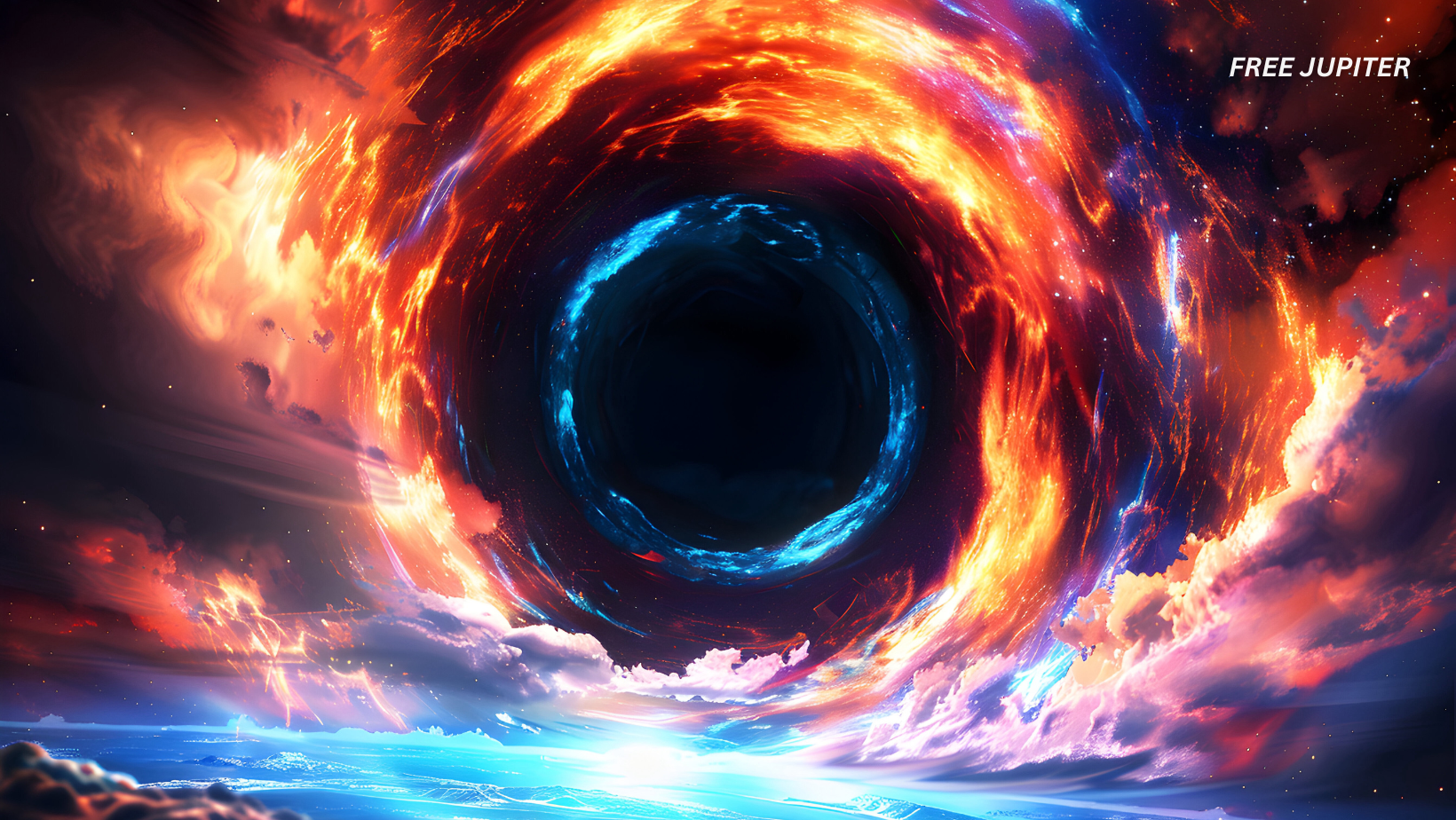Friendly Note: FreeJupiter.com shares general info for curious minds 🌟 Please fact-check all claims—and always check health matters with a professional 💙
For nearly a hundred years, the cosmos has whispered of something hidden, a strange, invisible substance that silently governs how galaxies swirl and stick together. This elusive presence, known as dark matter, has perplexed generations of scientists. It’s not just unseen, it’s undetectable using even our most sophisticated instruments. And yet, it shapes the universe in profound ways.
Now, in an astonishing twist, researchers propose that dark matter might not have been born in the Big Bang at all. It may have predated it.
The Quiet Architect of the Universe
The story begins in the early 20th century, when astronomers noticed something was off. Galaxies weren’t moving the way they should if only visible matter were at play. There had to be something else, an unseen mass exerting gravity. The mystery deepened over decades, and with time, dark matter evolved from an idea to a cornerstone of cosmic theory.
Then came a breakthrough: The cosmic microwave background (CMB), the faint afterglow of the universe’s earliest moments, offered more than a nostalgic whisper from the past. It showed that dark matter was instrumental in forming the structure of the universe, guiding the clustering of galaxies like an invisible hand.
According to data from the Planck satellite in 2018, dark matter accounts for about 27% of the universe’s total energy content. In contrast, ordinary matter—the kind we’re made of—comprises just 5%. The rest? It’s believed to be dark energy, another cosmic mystery.
Looking for Ghosts in the Machine
Despite being a dominant player in the cosmic story, dark matter remains maddeningly out of reach. Over the years, physicists have turned to theories like supersymmetry to explain it. This concept suggests that every known particle might have a heavier “shadow” counterpart. If these partner particles exist, one of them might be the elusive dark matter particle.
One class of particles, known as WIMPs (weakly interacting massive particles), became strong candidates. These theoretical entities would barely interact with regular matter, making them incredibly hard to spot. Deep underground detectors and high-energy experiments like those at CERN’s Large Hadron Collider have tried—and failed—to find them.
Certain signals, like those observed by the DAMA experiment, seemed promising. But those claims remain controversial and haven’t been verified by follow-up studies, including those by COSINE-100. The mystery remains intact.
Read more: New Quantum Gravity Theory Brings World Closer to the ‘Theory of Everything’
A Radical New Beginning: The “Dark Big Bang”
Then, in 2023, physicists Katherine Freese and Martin Winkler introduced a bold alternative: what if dark matter didn’t come from the Big Bang at all? What if it came from its own Big Bang?
Enter the “Dark Big Bang” (DBB)—a separate cosmic event that may have unfolded after the initial Big Bang, but within an entirely different realm of physics. According to this idea, the early universe wasn’t just made of the visible particles we know. It also contained a “dark sector,” isolated and cold, existing in parallel but not interacting with regular matter.
In this theory, a quantum field in the dark sector was stuck in what physicists call a “false vacuum”—a temporary state of stability. Eventually, it collapsed into a lower-energy state, unleashing a flood of dark matter particles in its wake. This would have been a transformative event, much like the Big Bang we’re familiar with, but confined to the hidden side of the cosmos.
What’s extraordinary about the DBB idea is its flexibility. It allows for dark matter to come in a wide variety of particle sizes, from ultra-light to incredibly massive, accommodating possibilities that older models couldn’t.
Telltale Ripples in the Dark
Here’s where things get especially fascinating: the DBB event might have left a signature. As the dark sector underwent its explosive transition, it could have produced gravitational waves—those subtle ripples in spacetime that scientists now routinely detect from black holes and neutron stars smashing into one another.
But these waves would be different. They’d be born from a shadowy sector, far removed from regular matter. The key is that these signals could be picked up by a new generation of observatories sensitive to low-frequency gravitational waves. Projects like the Square Kilometer Array (SKA) and the International Pulsar Timing Array (IPTA) are at the forefront of this quest.
In fact, the recent detection of a low-frequency gravitational wave background by the NANOGrav collaboration—a group within IPTA—has already stirred speculation. Though the origin of these signals is not yet confirmed, some researchers believe they might match the type of waves predicted by the DBB model.
Read more: Experts Say ‘Time Mirrors’ Are Actually A Real Thing: ‘Like Pressing Undo On The Universe’
Digging Deeper Into the Dark
Building on the original DBB proposal, physicist Cosmin Ilie of Colgate University and student researcher Richard Casey explored additional possibilities. Their work expands the theoretical space for what this dark field transition might look like, identifying scenarios where the model’s predictions line up perfectly with current observations.
What they found is promising: certain versions of the DBB model not only explain the presence of dark matter, but they also predict gravitational wave patterns that could, in the near future, be confirmed or ruled out by experiments.
Ilie is optimistic. “If we detect gravitational waves from the Dark Big Bang, it would be an unprecedented breakthrough,” he notes. Such a discovery would offer direct evidence of a separate origin for dark matter—something scientists have never seen before.
A Universe with Two Birthdays?
The philosophical implications of the DBB theory are just as staggering as the science. For decades, cosmologists have assumed that all matter—visible and dark—emerged from a single cataclysmic beginning: the Big Bang. But what if that assumption is wrong?
If dark matter truly came from a second, distinct explosion of its own, then the early universe was far more complex than anyone imagined. It wasn’t just a singular fireworks show—it was a dual act, with visible and invisible matter taking dramatically different paths to existence.
This view challenges conventional models and may require a total overhaul of how we understand the formation of galaxies, the evolution of cosmic structures, and even the nature of time itself.
The Road Ahead
While the DBB theory remains unproven, it opens an exciting frontier in the hunt for dark matter. It also highlights the growing role of gravitational wave astronomy as a tool for exploring the invisible.
More sensitive instruments are on the horizon. The SKA, for example, promises to detect subtler, longer-period gravitational waves than ever before. With time, these facilities might be able to detect a telltale signal from the dark sector’s ancient upheaval.
Meanwhile, particle physicists continue probing the subatomic world for hints. Whether through underground detectors, high-energy collisions, or signals etched into the microwave sky, the quest for dark matter is far from over.
Read more: NASA Finds A Massive Diamond In Space That Is 5 Times Larger Than Earth!
Final Thoughts: A Universe Yet to Be Understood
Unraveling the secrets of dark matter is more than an intellectual challenge—it’s a step toward understanding the true architecture of the cosmos. The DBB model, with its unique predictions and elegant symmetry, may offer the missing chapter in this cosmic narrative.
And if those faint gravitational whispers from the dark sector turn out to be real? Then we may finally grasp a truth stranger and more beautiful than we ever imagined: that our universe was not born once, but twice.










